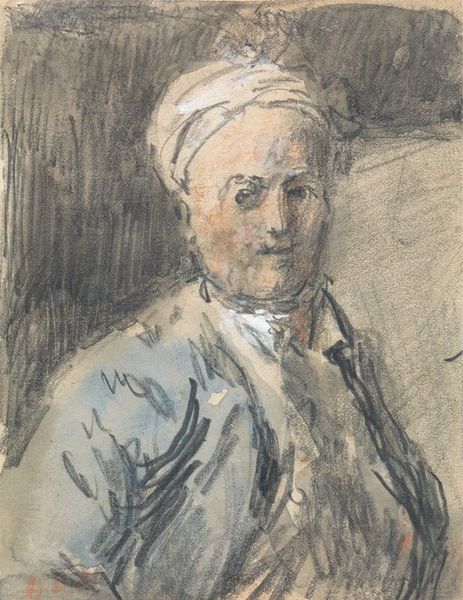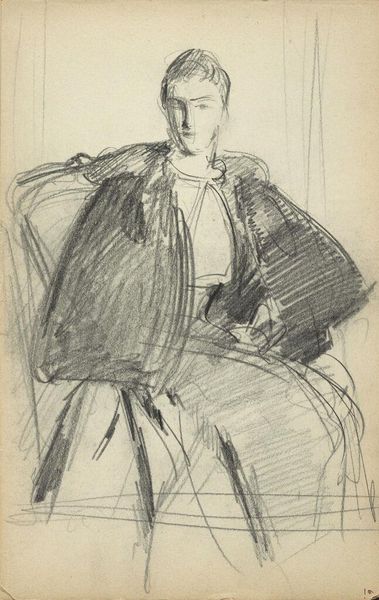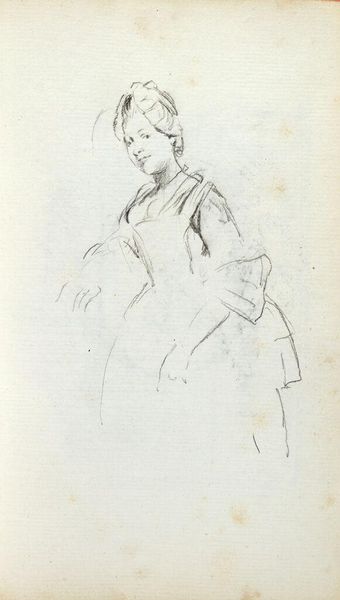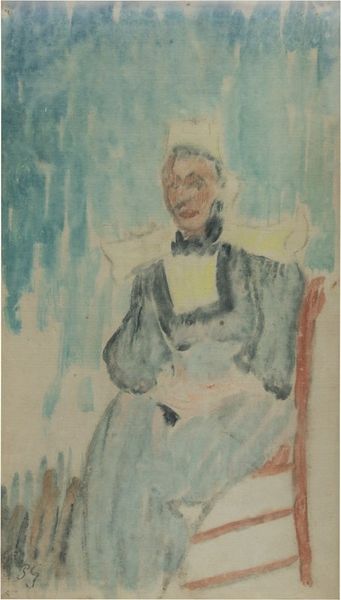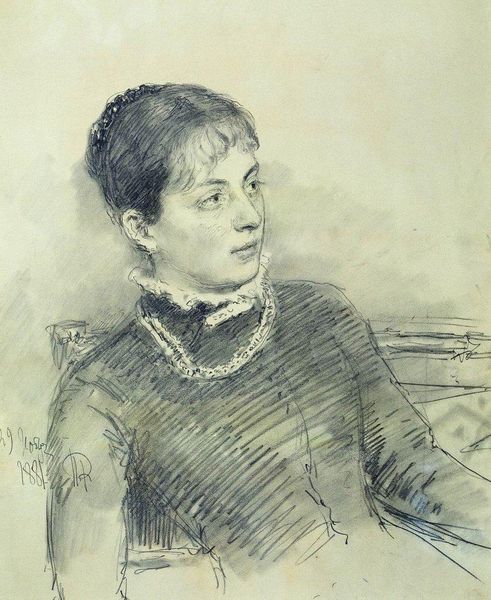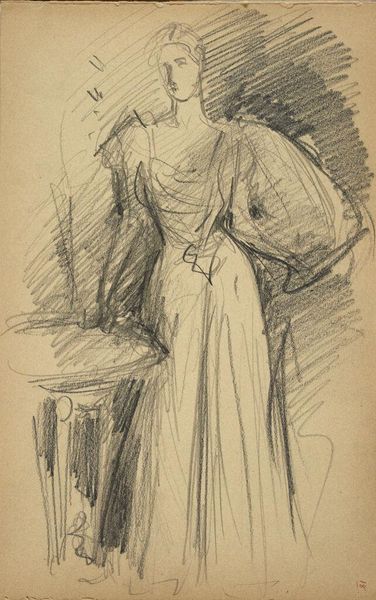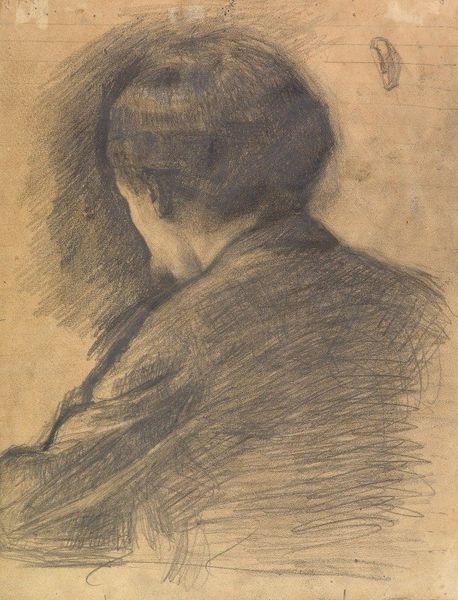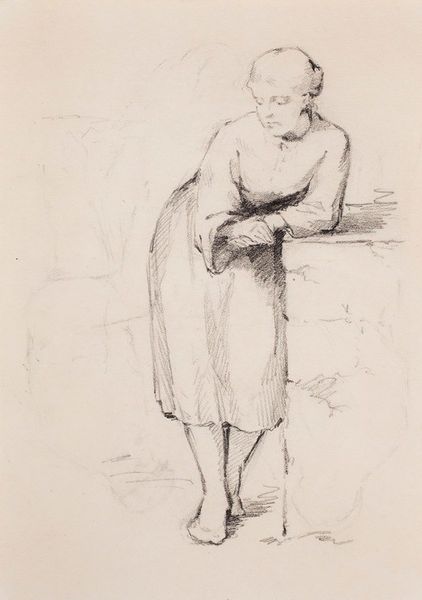
Copyright: Public domain
Curator: Welcome. Let's turn our attention to Paul Cézanne’s "Seated Woman," a watercolor and pencil drawing completed around 1895. It’s currently held in a private collection. Editor: Immediately, I’m struck by the work’s almost melancholic aura. The woman's averted gaze and the muted palette evoke a sense of quiet introspection, of perhaps resigned acceptance to her limited station. Curator: The restrained palette undeniably shapes our interpretation. Cézanne’s careful construction, evident in the geometric simplification of form, hints at his later cubist explorations. The subtle layering of watercolor adds depth without sacrificing the composition’s overall flatness. Editor: Yes, and within that flattening, the figure, particularly her dress, becomes architectural, like the landscapes Cézanne often depicted. Her clothing subtly cages her, suggesting social constraints placed upon women during the Belle Époque. Was she confined by expectations, perhaps a lack of opportunity or agency? Curator: An insightful reading. Consider the deliberate distortions and disjointed perspective – hallmarks of Cézanne’s style. They challenge conventional representation and ask the viewer to engage actively in piecing together the image. Note the interplay between line and wash. The strong contours define the figure, while the diluted watercolor softens the overall effect, a dance between structure and fluidity. Editor: Those "distortions" are deeply unsettling. Are they about psychological disturbance or emotional withholding? She seems trapped in a domestic space, barely acknowledged, subtly erasing the sitter as an individual. This visual erasure mirrors the lived experiences of countless women relegated to the margins of society. Curator: But consider how the lack of meticulous detail focuses our attention on the fundamental structure. It is, essentially, about *how* we perceive, not just *what* we perceive. Cézanne reduces the figure to essential forms, revealing an underlying order in what initially appears disjointed. Editor: And what order might that be? Perhaps the patriarchal order of 19th-century France, which meticulously categorized and contained women. Still, your close readings always reveal crucial points. Curator: As do yours. What a thought-provoking piece. Editor: Indeed. The power of suggestion and social commentary remains quite strong in it.
Comments
No comments
Be the first to comment and join the conversation on the ultimate creative platform.
